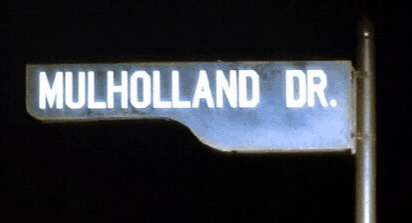The Embassy, Edinburgh, UK
The Embassy has an unenviable job competing with the imposing Salisbury Crags, a magnet for Edinburgh’s spiritual dissidents, from the Beltane fire of the Pagans to the tub-thumping of Covenanters. ‘Fire and Brimstone’ is a fitting epithet for zealots who, bathed in wispy gas pockets of red light, preached divine malediction on tyrannical authority from the Crags. It is an equally appropriate image for the work assembled in their tempestuous shadows, tentatively united by neo-Romantic landscape and the psychodrama of paper architecture.
The fantastic architectural territories of ‘Fire and Brimstone’ are all unoccupied and ominous, possessed by the Rosicrucian mysteries of the city’s nearby Roslin Chapel. Oran Wishart’s painting Splendid Isolation (all works 2004) portrays a remote Presbyterian kirk, its ashen walls glowing in the perpetually pitch envelope of winter, crushed by a cumbersome field of black that trickles down the canvas. Duncan Marquis’ Nocturne, a hollow, tremulous bedchamber sodden with malevolence, bathes in the dusk light of hellfire, luminescent enough only to suggest repentant rituals. Andrew Wake’s opaque drawing Psychopomp, a creaky drawing room book-ended by wandering Doberdemons on loan from The Omen, echoes Marquis’ spine-chilling application of symmetry. The studied neo-Gothic ambience is interrupted by John MacLean’s work, which takes the soundscape of his new Beta Band album Heroes to Zeros as its province. MacLean paints an imaginary building site wherein blocks of text are being swung into place to list the tracks, the modular units of prefabricated font disappearing into a Masonic linear perspective. Sam Griffin’s Unité d’Habitation redefines Modernist machines for living in, a cross-section of Le Corbusier’s signature structure that transforms its guts into a sci-fi scene reminiscent of 1980s platform computer games.
Rural allegories preoccupy The Lonely Piper, a neo-Romantic semblance whose perception is altered by the landscape in principally profane ways. Hand Shandy juxtaposes the legend ‘Shand’ from a Jimmy Shand LP and a mid-1960s postcard of a snowy glen. While the image brands this landscape with Shand’s brassy ceilidh sound, the title reminds us that his name is more commonly known as slang for masturbation. Across the gallery gesticulates Alex Pollard’s Arm Wrestle, a skeletal hand, made from broken paintbrushes stuck onto low-budget marquetry, foppishly goading the viewer into a trompe-l’oeil test of strength. The Piper’s The Ghosts of Redcoats Roam is equally pejorative, a collage depicting an English redcoat walking by the lochside cursing ‘dam and blast these small flies’ at the Jacobite midges that swarm around him, eternally avenging the 1746 massacre at Culloden. The Piper also exhibits one of his signature ‘all-over’ web paintings, Tartanalia, Abstract Expressionism motivated equally by the myth of self-critical Modernist painting and the shortbread tin legend of Robert the Bruce. On a small black tablet the Piper weaves a painterly web glorifying the industriousness and creativity of the spider. From the skeins of paint we can make out the legend ‘There’s a Deer Tick in Your Eye’, a reference to the main cause of Lyme Disease, commonly known as ‘Bull’s Eye’ – the allusion forms both a self-referential pun on the dartboard’s concentric composition and a description of eyesight afflicted by bloodshot rash.
Norman Shaw’s research on Romantic perceptions of the Highlands has taken him deep within Scotland’s megalithic valleys. Shaw is drawn to imaginary soundscapes such as James Macpherson‘s hugely influential myth of Ossian and the Scots notion of the makar, the poet as a worker in the craft of writing. His drawings can be read as sound wavelengths, rhizomatic songlines that mythologize the sublime landscape. ‘Nemeton’ – a sacred grove within which druids, artists and scholars would gather to worship and exchange knowledge – links the Scots makar with older Celtic legends of communal, oral culture. Shaw experiments with drugs to produce his ghostly ‘Nemeton’ drawings, resembling early 1970s ‘vaginal iconography’: force fields, rock formations, butterflies, monsters and flowers.
This floral intimation of the sublime is echoed in Melanie Carvalho’s collage Rhodroponicum. The rhododendron is a lingua franca of flowers, giving most of the northern hemisphere its first indication of spring. Carvalho has collected samples growing in the Himalayas, the mountains of Malaysia, North America, Europe and Japan, taking her clippings from postcards, glossy holiday brochures and posters yellowing on the walls of kebab shops. Although the rhododendron promises joy and warmth, its ubiquity ensures that it offers no geographic associations and, like the paintings of Claude Lorraine, remains an escapist ideal. Carvalho’s fabricated planet of the plants is complemented by Mairi Gillies’ Formorgyn, a pseudo-scientific colour wheel designed to administer a makeover of various food dyes to cut lilies. While invoking Ovid’s legend of the deflowering of Proserpine, Formorgyn illuminates the persistent exploitation of the term ‘natural’ in cosmetics. Over the duration of the exhibition Formorgyn ritually converts the lilies to their ‘cultural’ habitat by changing them from virginal white to a range of evenly toned, luminescent combination colours. The fuchsia, apricot and violet lilies resemble ‘natural’ skin tone correctors before becoming saturated and poisoned by the dyes. Of course, the cut lilies are unnatural throughout the experiment, their primordial ‘whiteness’ being a cultural product of Ovidian folklore. Their folk role here is to lead us from the great, dark, fierce, irresistible, continual, unquenchable, everlasting fire and brimstone towards the neon and arc lights.


